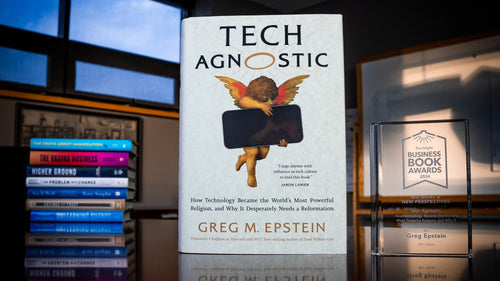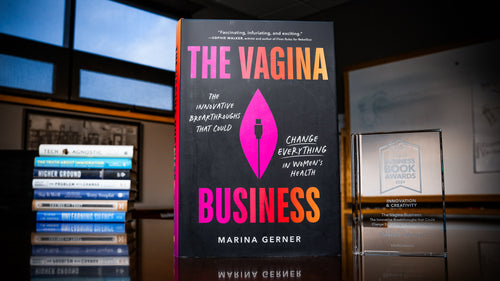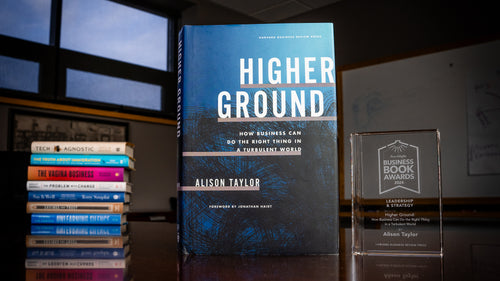The Might and Myth of Good To Great
A growing wave of critics is taking shots at Jim Collins and his book, Good to Great, questioning the research and Collins' oft-followed path for corporate success. The arguments against Collins are nicely summarized in a Boston Globe article written by Drake Bennett titled "Luck Inc." Jim Collins is quoted, pushing back on some of the counterclaims to his contribution to "business-success literature." Bennett also gets a quote from Tom Peters, co-author of In Search of Excellence —- which takes its share of hits for similar offenses. (Peters posted two lengthy response on his own blog - part one and part two). Halo Effect author Phil Rosenwieg makes an appearance too, strongly advocating a second look at the validity of these types of books. In sum, I found that the article offers a good history of business books and shows great journalistic work on Bennett's part.
Rather than write a lengthy response here with additional claims, I am going to direct you to Bob Sutton's (whom Drake interviewed for his article) blog post, "A Well-Crafted Critique of Business "Success" Books and My Ambivalence About Good to Great." In typical form, Sutton delivers a response with substance and clarity, having explored this terrain well with Jeffery Pfeffer in Hard Facts, Dangerous Half-Truths and Total Nonsense. One particular point of Sutton's that bears repeating, however, is the irony in that many of the findings that Collins reports are supported by other peer-reviewed research, something Collins fails to use in Good To Great. His theories about "Getting The Right People On The Bus" and "The Hedgehog Concept" might be worthy of pursuit, but given the shortcomings in the research it would be wrong to attribute the importance of thoughtful hiring and strategic focus to Collins' work alone.
The bottom line is this: there is enough evidence now to force us to reconsider Good To Great as the pinnacle management book of this decade. Michael E. Raynor, Mumtaz Ahmed, and Andrew D. Henderson in their recent HBR article say that success studies should be treated like fables and looked at as sources of inspiration, not how-to manuals. Good to Great is directionally correct, but it is hard to see the book as the roadmap for making your company great.
What makes all of this more interesting is the May 19th release of Collins' new book, How the Mighty Fall: And Why Some Companies Never Give In. The book's publisher, HarperCollins, is not releasing any advance copies, but here is the marketing copy for the new effort:
Good to Great and Built to Last identified the distinguishing characteristics shared by companies that not only achieved greatness, but also sustained it. In How the Mighty Fall, Jim Collins considers the "dark side," offering a perspective on how a fall from greatness can happen -- to even the seemingly invincible. Adapting the very methodology that established Good to Great as a landmark, How the Mighty Fall shows that every institution, no matter how great, is vulnerable to decline, but recovery is possible. In some cases, companies emerge stronger -- even after having crashed into the depths of a near-catastrophic fall. Collins presents a framework that will help business leaders and companies identify the "silent creep of impending doom" and swiftly set a correction course. Rigorous in its analysis, surprising in its findings, How the Mighty Fall is an in-depth look at the decline of some of our nation's greatest companies and a useful tool for companies and individuals seeking to avoid such a fate. Themes from How the Mighty Fall:
Whether you prevail or fail, endure or die, depends more on what you do to yourself than on what the world does to you.
An institution can look strong on the outside but already be sick on the inside, dangerously on the cusp of a precipitous fall.
The signature of the truly great versus the merely successful is not the absence of difficulty, but the ability to come back from setbacks, even cataclysmic catastrophes, stronger than before...As long as you never get entirely knocked out of the game, hope always remains.
Jim Collins' extensive interview with Bo Burlingham in the 30th anniversary issue of Inc. Magazine alludes to some of the new material. BusinessWeek is also going to have early coverage of the book according to a sales mediakit.
I find it intriguing that the promotional copy proudly touts the "very methodology" Collins used in creating Good to Great and think instead many will be looking at this book much more closely to see if Collins has corrected some of his research faults.



